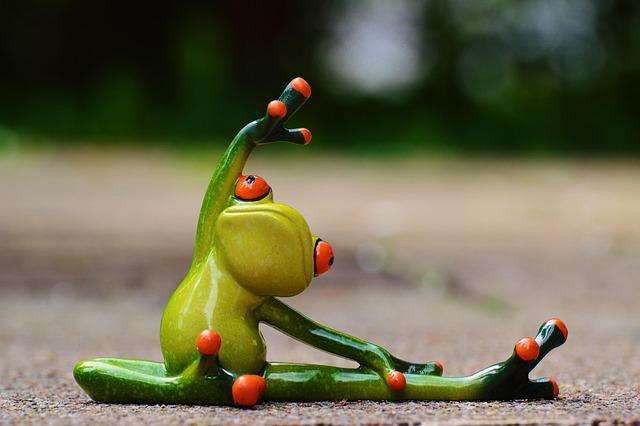As the World Athletics Championship kicks off in Japan, athletes face an unexpected adversary beyond their competitors: an intense heatwave sweeping the region. Sebastian Coe, President of World Athletics, has highlighted the extreme temperatures as a significant challenge that could impact performances and athlete safety during the event. With rising concerns over the sweltering conditions, organizers and participants are bracing for what could be one of the toughest championships in recent history.
Japan Heatwave Poses Significant Challenge for World Athletics Championship Competitors
As temperatures in Japan soar beyond seasonal averages, competitors at the upcoming World Athletics Championship are bracing for an unprecedented physical test. Sebastian Coe, President of World Athletics, emphasized the severity of the challenge, noting that the sweltering conditions will require enhanced safety protocols and adaptation strategies. Athletes, coaches, and organizers are collaborating closely to mitigate the risks associated with heat exhaustion and dehydration, which could critically impact performance and health.
To address these concerns, a comprehensive plan has been put in place focusing on hydration, scheduling adjustments, and cooling zones. The following measures highlight key initiatives aimed at protecting athletes:
- Increased hydration stations positioned throughout the competition venues
- Modified event timings to avoid peak afternoon heat
- Introduction of shaded rest areas and misting tents for on-site recovery
- Medical teams on high alert for heat-related emergencies
| Factor | Impact on Performance | Mitigation Strategy |
|---|---|---|
| High Humidity | Reduced sweat evaporation | Frequent hydration breaks |
| Peak Heat Hours | Increased fatigue | Scheduling early morning/late evening events |
| UV Exposure | Risk of sunburn and overheating | Provision of shaded zones and sunscreen |
| Heat Accumulation | Possible heatstroke | Medical readiness and rapid cooling measures |
Sebastian Coe Emphasizes Importance of Hydration and Acclimatization Strategies
In light of the intense temperatures expected during the World Athletics Championship, Sebastian Coe highlighted the critical role of maintaining proper hydration and employing effective acclimatization methods. Athletes competing under Japan’s scorching heatwave need to be vigilant about fluid intake to sustain peak performance levels and avoid heat-related illnesses. Coe stressed that hydration strategies must be personalized, focusing not only on water but also on electrolyte balance to combat dehydration caused by excessive sweating.
Additionally, athletes are urged to adopt acclimatization techniques well ahead of the event to allow their bodies to adjust to the extreme conditions. This includes:
- Gradual exposure to heat in training environments
- Modified workout intensity to conserve energy
- Use of cooling garments and recovery methods post-exercise
- Scheduled hydration breaks tailored to individual needs
| Hydration Tips | Acclimatization Methods |
|---|---|
| Drink 150-250 ml every 15-20 min | Train 1-2 weeks prior in heat |
| Include electrolytes (sodium, potassium) | Utilize sauna or heat chambers |
| Avoid caffeine and alcohol pre-race | Incrementally increase training duration |
| Monitor urine color as hydration indicator | Prioritize rest and cooling strategies |
Officials Advise Athletes to Adapt Training Regimens and Monitor Heat-Related Health Risks
With temperatures expected to soar during the Japan World Athletics Championship, officials are urging athletes to make significant adjustments to their training routines. Experts emphasize the importance of gradual heat acclimatization, hydration strategies, and reducing intense sessions during peak heat hours. Athletes are advised to incorporate shaded or indoor workouts and to closely monitor their body responses to prevent overheating and exhaustion.
Health professionals involved in the event have outlined key preventive measures to mitigate heat-related risks. These include:
- Regular hydration breaks to maintain electrolyte balance
- Use of cooling techniques such as ice vests or cold towels
- Monitoring vital signs like heart rate and core temperature
- Immediate medical attention if symptoms of heatstroke or heat exhaustion appear
| Risk Level | Recommended Action | Symptom Indicators |
|---|---|---|
| Low | Maintain hydration, light training | Mild sweating, thirst |
| Moderate | Increase breaks, use cooling gear | Dizziness, headache |
| High | Cease training, seek medical help | Confusion, nausea, rapid heartbeat |
Concluding Remarks
As the World Athletics Championship approaches, athletes and organizers alike brace for the challenges posed by Japan’s intense summer heat. Sebastian Coe’s remarks underscore the need for careful preparation and adaptive strategies to ensure competitor safety and performance. With temperatures expected to soar, the championship will not only test athletic prowess but also resilience against demanding environmental conditions. Officials continue to monitor the situation closely, emphasizing the importance of hydration, scheduling adjustments, and medical support as the event unfolds.

